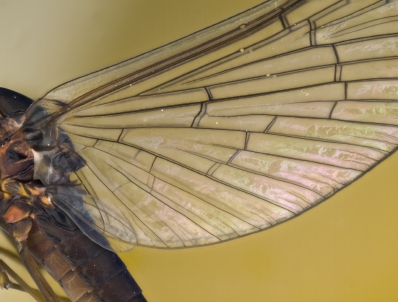When I think back to my experience last year at InterVarsity’s Faculty Camp at Cedar Campus, I remember the story of the mayfly.
Some ten years ago, the mayflies returned home to the Great Lakes after a 40-year absence. Crowded out by polluted waters, they came back in the mid-1990s to reclaim their ancient ground. And now, they return each summer in cloud-like swarms, sometimes ten miles long, cutting the sky over those big waters as a testament to a renewed and healthier ecosystem. The locals call them “Canadian sailors,” and many people make summer pilgrimages to the coasts of those majestic lakes to witness their return. There are even websites devoted to tracking these “pests,” so-called because of their tendency to literally invade towns, blanketing cars, buildings, and sidewalks — wreaking havoc on the rhythms of modern life.

Mayflies are members of a species of insects called “ephemeroptera,” from the Greek word “ephemeros,” meaning “short-lived.” Remarkably, it takes up to two years buried in depths of lake sediment, in some cases 48 feet deep, for mayfly eggs to mature, hatch, and move against the weight of all that water, compelled by light to converge with sky. And the mayfly waits all that time and goes to all that trouble to mate and live, on average, only one day before its body is returned to the dim water once again, becoming food for fish.
I never saw for myself those elegant wisps of ephemeral life during my time on the shores of Lake Huron. But I imagine them rising up from the lake in throngs, free from the deep to stake their claim once again in the cycle of time, as if resurrected. I wonder, what truths can nature teach us about life and purpose through an insect that lives but one day?
The Romantic poet John Keats yearned for “a life of sensations rather than of thoughts.” And before him, William Blake imagined seeing “a world in a grain of sand . . . eternity in an hour.” The flight of the mayfly answers these poets, taking us beyond “want” to that part of our soul that yearns to live once again by faith alone. For the mayfly, faith means performing its duty earnestly and instinctively, never once questioning the fleeting nature of its happiness — never pondering the meaning of a life driven by pure necessity with little expectation of reward beyond the joy of that one flight and the greater purpose behind it.
The lore of the mayfly captures, for me, the magic of Cedar Campus. There, romanced by the beauty of God’s creation, I was reminded of necessity. Like the mayfly, need returns us to our origin and ultimate purpose: to a place of living not in the power of thought, or in satisfaction of want, or in the roundness of surfeit, but in the necessity of wing and prayer, conscious of only one day.
Whether admiring an opal sunset on The Bear, kayaking to the beaver dam, or hiking the Narnia Trail, the beauty of Cedar Campus returned me to necessity, to daily bread. My time there was a reminder that what I need is often lost in a life filled with so much gain. Disrupting these daily rhythms, the natural opulence of Cedar Campus strips life down, paradoxically, to its more primitive and basic sensations, making room for the kind of spiritual healing that can only happen when we are able to live in the moment of this day, our daily bread — aware of each breath, each grain of sand between our toes, each whisper of wind.
Living, for a time, like the mayfly.